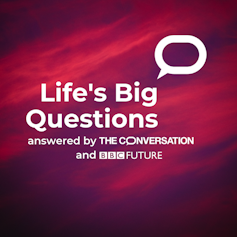
GUEST POST from Art Inteligencia
In today’s fast-paced business environment, companies are often torn between pursuing immediate profits and investing in future innovations. Many leaders grapple with the challenge of balancing these competing priorities to ensure both short-term performance and long-term sustainability. This article explores strategies for achieving this balance through effective leadership, corporate culture, and strategic decision-making.
The Importance of a Balanced Approach
Short-term financial gains are crucial for maintaining shareholder confidence and funding daily operations. However, an excessive focus on immediate returns can stifle innovation, hinder adaptability, and ultimately jeopardize long-term success. Striking the right balance allows an organization to remain competitive in the present while positioning itself for future growth.
Case Study 1: Kodak’s Innovation Myopia
Once a dominant force in the photography industry, Kodak fell from grace due to its reluctance to embrace digital innovation. Despite inventing the first digital camera in 1975, Kodak was reluctant to pursue this technology aggressively, fearing it would cannibalize its highly profitable film business. This short-term mindedness led to Kodak filing for bankruptcy in 2012.
The lesson here is clear: organizations must not allow the pursuit of immediate profits to blind them to the possibilities of transformative innovation. Strategic foresight and a willingness to disrupt one’s own business model are critical in avoiding the pitfalls of innovation myopia.
Building a Culture of Innovation
To maintain a balance between short-term gains and long-term innovation, organizations must cultivate a culture that encourages experimentation and embraces change. Encouraging open communication and fostering an inclusive environment where all ideas are welcome can drive creative thinking and innovation.
“Innovation is not just about creating new products; it’s about cultivating a mindset that embraces change and values learning.” – Braden Kelley
Empowering teams to take calculated risks and learn from failures can significantly boost innovation. Leaders play a pivotal role in setting the tone for this culture by recognizing and rewarding innovative efforts and providing resources for continuous learning and development.
Case Study 2: Amazon’s Disruption Strategy
Amazon exemplifies a company that has successfully balanced short-term gains with long-term innovation. By continuously reinvesting profits into research and development, Amazon has managed to disrupt multiple industries, from retail to cloud computing.
Amazon’s willingness to take risks on new ventures such as AWS and Kindle shows a commitment to long-term innovation. The company prioritizes customer experience and long-term value creation over immediate profits, allowing it to maintain a competitive edge in diverse markets.
This approach underscores the importance of vision-driven leadership and strategic planning in ensuring sustained innovation and growth, without sacrificing performance.
Strategic Decision-Making for Sustainable Growth
Balancing short-term and long-term priorities requires a strategic approach to decision-making. Organizations should implement frameworks that integrate both short-term performance metrics and long-term innovation goals.
This involves setting clear objectives, aligning team efforts with the organization’s vision, and continuously monitoring the market landscape to adapt strategies as needed. Scenario planning and innovation roadmaps can help leaders anticipate future trends and make informed decisions that align with both immediate needs and broader innovation goals.
Conclusion
Balancing short-term gains with long-term innovation is a delicate yet vital endeavor for any organization looking to thrive in today’s competitive landscape. By fostering a culture of innovation, learning from examples like Kodak and Amazon, and employing strategic decision-making frameworks, businesses can ensure they remain agile and competitive.
Ultimately, success lies in embracing the dual imperatives of immediate performance and future potential, thus positioning the organization for sustained growth and impact.
Extra Extra: Futurology is not fortune telling. Futurists use a scientific approach to create their deliverables, but a methodology and tools like those in FutureHacking™ can empower anyone to engage in futurology themselves.
Image credit: Pixabay
![]() Sign up here to get Human-Centered Change & Innovation Weekly delivered to your inbox every week.
Sign up here to get Human-Centered Change & Innovation Weekly delivered to your inbox every week.











